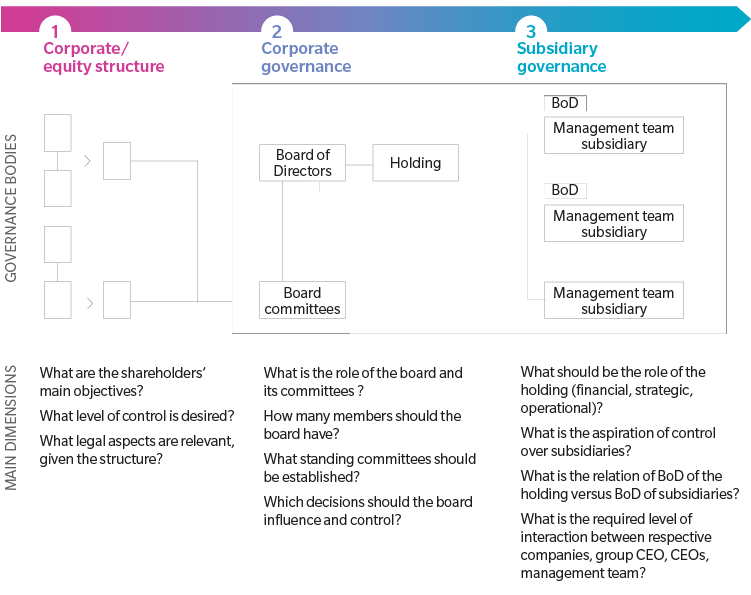By Volker Weber, Saji Sam
This article first appeared in MEED on May 31, 2018.
Before June 2014, running a national oil company (NOC) was certainly not easy, but it was less complicated than it is today. That month, the price of crude oil embarked on a yearlong freefall that crippled the revenue streams of many Middle Eastern NOCs – and ultimately the budgets of the nations that own them.
The crash left many NOCs more committed than ever to broadening their businesses downstream into refining and petroleum products. More than anything else, they knew they needed to become international players.
With that decision, the NOCs opened up new business opportunities – partnering across new global marketplaces with potential customers; attempting to achieve operational efficiencies through mergers; and even, in the case of two NOCs, raising funds by going public. But it also exposed NOCs for the first time to a whole new arena
of risks and new rules on how to conduct business.
Suddenly, they were contending with a variety of unfamiliar foreign country-specific standards on business practices, the environment, health and safety, tax regulation, and government-reporting requirements.
MANAGEMENT STRUCTURE
Once on the international stage, NOC management teams found that they needed a corporate governance infrastructure that matched the elevated risk management and myriad regulations and bureaucratic processes required by the new countries in which they wanted to operate.
Where in the past problem solving or getting permission for certain projects meant negotiation with familiar agencies and trusted officials, NOCs are increasingly being pulled out of their insular habitats and thrust into foreign environments where they do not know the officials and the officials do not know them – and where regulations compel them to produce data and documentation to back up claims being made or deals being struck.
Most NOCs are finding they do not have the governance procedures in place to sufficiently cover their practices. As the business models for NOCs become more complex, governance structures originally built to handle managing oil and gas production and meeting national objectives rather than business performance goals must change.
If these NOCs hope to become publicly traded, diversified energy conglomerates, mirroring international oil companies, they will need the same kind of strategic, digitized, centralized and risk management-focused governance systems that their international counterparts have. (See Exhibit 1.)
Exhibit 1: A SYSTEMATIC GOVERNANCE FRAMEWORK IS REQUIRED TO MANAGE STAKEHOLDERS’ INTEREST IN A CORPORATION

Source: Oliver Wyman analysis
CORPORATE GOVERNANCE
One of the first areas they must address is their management structure. Traditional governance models at most Middle East NOCs are based on a holding company’s structure controlling several operating subsidiaries. The reporting lines are lean and informal, often based on personal relationships or family ties.
While this works well at home, where the principal goal is meeting governmental budgetary targets and business is often concluded on a handshake or verbal agreement, it does not provide the managerial support, financial documentation, and risk management needed for projects far from home, particularly those with international joint-venture partners.
BOARD COMPOSITION
These joint ventures are prompting a few forward-thinking NOCs to modernize their governance structure, particularly at the operating subsidiary level. They are creating new, more formal governing boards based on reporting protocols and frameworks more familiar to their global partners.
This change involves recruiting directors with the appropriate technical expertise, whose positions are based on merit rather than political patronage. It also requires bringing in independent outsiders.
Abu Dhabi National Oil Company’s (ADNOC) distribution operating subsidiary is a good example of how boards are starting to change. In 2017, the same year that the unit did an initial public offering of 10 percent of its equity, the CEO of Compania Espanola de Petroleos joined the ADNOC Distribution board as an independent director.
Changing the board composition is one of many necessary steps, which start with creating a systematic governance framework to manage stakeholder interests, giving more independence to operating subsidiary boards, and digitizing substantial portions of operations for efficient collection of data.
National oil companies need the same governance systems that the international counterparts have
NOCs cannot just copy-and-paste the corporate governance structures used by international oil companies, as their mandates are different. Most NOCs are accountable to the government and national objectives, such as providing employment.
But if they want to raise capital on international markets and operate in other countries, their corporate governance structure must provide the same kind of transparency and accountability as their international counterparts or their efforts to go global may be stymied.













